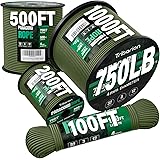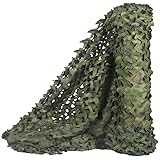Understanding Wilderness Hypothermia Rewarming: Critical Field Strategies
Annually, cold weather conditions contribute significantly to outdoor emergencies, with hypothermia posing a grave threat to adventurers and rescue personnel alike. When core body temperature drops below 95°F (35°C), the body’s physiological functions are compromised, necessitating immediate intervention. The complexities of wilderness hypothermia rewarming, especially during prolonged evacuations, often lead to dilemmas regarding the most effective and safest approaches in remote settings. The accompanying video offers valuable insights into these challenges, and this article further explores the nuanced strategies required for patient stabilization and rewarming.
Approaching Hypothermia Management in the Field
The primary objective in wilderness hypothermia management is not merely to rewarm a patient, but initially to stabilize their thermal condition and prevent further heat loss. This distinction is crucial, particularly when a medical director advises against aggressive field rewarming due to potential risks. In environments where evacuation might take an entire day, allowing a patient’s core temperature to continue declining is inherently detrimental. Therefore, even if active rewarming is limited, thermal stabilization is always paramount. Heat must typically be added to achieve this stabilization in cold environments.
Defining Hypothermia Severity
The approach to rewarming is significantly influenced by the patient’s hypothermia severity, which is often categorized as mild, moderate, or severe. Mild hypothermia is generally indicated by core temperatures between 90-95°F (32-35°C), where shivering is typically present. Patients in this category often retain their mental faculties and gag reflex. Moderate hypothermia occurs between 82-90°F (28-32°C), marked by impaired consciousness and potentially decreased shivering. Severe hypothermia, characterized by core temperatures below 82°F (28°C), often presents with an absent gag reflex, obtundation, and a lack of shivering, demanding highly cautious and specific interventions.
The Imperative of Thermal Stabilization
Thermal stabilization in the field involves preventing any additional heat loss while gently initiating warmth. This process is critical because continued cooling can exacerbate physiological distress, leading to cardiac arrhythmias and further organ dysfunction. Furthermore, it is often taught that thermal stability can be maintained even without aggressive rewarming efforts; instead, focus is placed on insulation, shelter, and modest external heat application to halt the progression of hypothermia. Effective insulation is considered the cornerstone of this strategy, ensuring that whatever body heat remains or is generated, it is retained.
Practical Wilderness Hypothermia Rewarming Methods
When active rewarming is deemed appropriate and feasible, several techniques can be employed to introduce heat to a hypothermic patient. These methods range from direct body contact to external heat sources, each with specific applications and considerations.
Leveraging “Friendly Mammal Heat”
Skin-to-skin contact, often referred to as “friendly mammal heat,” involves a rescuer getting into a sleeping bag with a hypothermic patient. This method is generally perceived as a simple way to transfer body heat. However, some articles have demonstrated that this technique can, paradoxically, reduce the rewarming rate in certain scenarios. This observed reduction is attributed to the inhibition of shivering. Shivering is the body’s natural, involuntary mechanism for generating heat, and its suppression in patients who are still capable of shivering can slow the overall rewarming process. This is a critical distinction; if a patient is severely hypothermic, shivering has usually ceased, making skin-to-skin contact a safer, albeit slow, method of heat transfer. For mild hypothermia where shivering is active, simply insulating the patient well and allowing them to shiver might be more effective for internal heat generation.
Utilizing External Heat Sources
Another accessible method for adding heat involves hot water bottles or chemical heat packs. These items are strategically placed on the patient’s body, typically in areas with major blood vessels close to the surface, such as the armpits, groin, and neck. Care must be taken to prevent burns; hot water bottles should not be boiling and should always be wrapped in a cloth layer before being applied directly to the skin. Chemical heat packs also generate significant heat and should be used cautiously with a barrier between the pack and the skin.
Beyond direct application, a comprehensive “hypothermia wrap” or “burrito wrap” can be created. This involves layering insulating materials around the patient, often starting with a vapor barrier (like a large plastic bag or emergency blanket) directly against the inner clothing layer to prevent evaporative heat loss from sweat. Over this, multiple layers of sleeping bags, blankets, or even natural insulation (if available) are wrapped snugly. The goal is to create a cocoon of insulation, trapping body heat and minimizing exposure to the cold environment. The video demonstrates this technique, showing how effectively a patient can be encapsulated for thermal management.
The Role of Insulation and Shelter
While direct rewarming is considered, the foundation of wilderness hypothermia rewarming remains preventing further heat loss. Effective insulation is paramount. This includes replacing wet clothing with dry layers, using high-quality sleeping bags rated for cold temperatures, and employing emergency blankets or bivy sacks as part of a layered system. Furthermore, constructing or utilizing an adequate shelter to shield the patient from wind, rain, and snow is indispensable. Even a slight breeze can significantly accelerate convective heat loss, underscoring the importance of a robust wind barrier.
Critical Considerations: Oral Fluids and Aspiration Risks
A common misconception in field hypothermia management involves the use of hot fluids. While a cup of hot chocolate might seem intuitively beneficial, its application depends entirely on the patient’s condition and the severity of their hypothermia.
The Dangers of Oral Fluids for Severe Hypothermia
For patients who are obtunded (have altered mental status) or those exhibiting an absent gag reflex, administering oral fluids, particularly hot ones, presents a significant danger. The gag reflex is a protective mechanism that prevents foreign objects and fluids from entering the airway. When this reflex is absent, fluids poured into the mouth can easily enter the lungs, leading to aspiration. Aspiration can result in severe respiratory complications, including aspiration pneumonia, which is a life-threatening condition, especially for an already compromised hypothermic patient. Therefore, any patient who is not fully conscious and alert, or whose gag reflex cannot be confirmed, should not be given oral fluids.
Effectiveness Limitations of Hot Drinks
Beyond the aspiration risk, the actual rewarming contribution of a hot drink to a severely hypothermic patient’s core body temperature is negligible. Consider the analogy of a small teacup of 100-105°F (38-41°C) water being poured into a bathtub full of 80°F (27°C) water. The tiny volume of the teacup has virtually no impact on the overall temperature of the bathtub. Similarly, a single cup of hot chocolate, which is not boiling, contains an insufficient amount of thermal energy to significantly rewarm the large volume of the human body, which is primarily water. While hot, sweetened drinks can provide comfort and caloric energy to patients with *mild* hypothermia who are conscious and have an intact gag reflex, they are not an effective core rewarming strategy for severe cases. For these individuals, the risk of aspiration far outweighs any minimal rewarming benefit.
Advanced Principles of Heat Transfer in Hypothermia
Understanding the basic principles of heat transfer—conduction, convection, radiation, and evaporation—is fundamental to effective wilderness hypothermia rewarming. Heat is lost from the body through all these mechanisms, and rewarming strategies aim to reverse or mitigate them.
Conduction, Convection, Radiation, and Evaporation
Conduction is the direct transfer of heat through contact. A patient lying on cold ground without insulation will rapidly lose heat through conduction. Placing an insulated sleeping pad underneath and using warm packs against the skin both address heat transfer via conduction.
Convection involves heat transfer through the movement of air or water. Wind passing over an exposed body part will carry away heat. Protecting a patient from wind and using multiple layers of clothing to trap warm air are key convective heat loss prevention strategies.
Radiation is the transfer of heat in the form of infrared rays. The body continuously radiates heat into its environment. Insulating layers, especially reflective emergency blankets, can help reflect this radiated heat back to the body.
Evaporation is the conversion of liquid (sweat or wet clothing) to gas, which removes a significant amount of heat from the body. Drying a patient and removing wet clothing, along with using a vapor barrier in the hypothermia wrap, are crucial for minimizing evaporative heat loss.
Metabolic Considerations and Glucose
Patients with hypothermia, especially those in mild stages, burn through significant amounts of glucose attempting to generate heat through shivering. Consequently, blood sugar levels can drop, exacerbating weakness and hindering self-rewarming efforts. For conscious patients capable of swallowing, providing easily digestible sugars, such as those found in sweetened hot drinks or granola bars, can replenish these stores and support their metabolic heat production. This is an important distinction from using hot fluids for core rewarming; instead, it is about providing fuel for the body’s own heat-generating processes.
Effective wilderness hypothermia rewarming demands a comprehensive understanding of patient physiology, environmental factors, and safe, practical interventions. The focus should always be on preventing further heat loss, cautiously adding external warmth, and meticulously avoiding interventions that could lead to further harm, such as aspiration. Informed decision-making and continuous thermal management are paramount for patient survival in challenging outdoor conditions.











